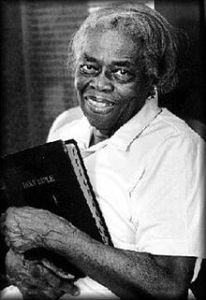February is Black History Month. Frankly, I don’t like the occasion.
Let me explain.
We should not need a special month to recognize and celebrate Black History. We should learn Black History every month. For that matter, we as Americans should spend more time learning history in general. We would benefit by learning more of our history, with its complexity and diversity. The insights, perspectives, and inspiration of studying history are invaluable and provide much needed context for current events.
Now, since it is Black History Month, I want to share the true story of an amazing philanthropist who died 20 years ago. Her tale demonstrates the power of philanthropy, the value of solid donor stewardship, and the important partnerships that financial advisors and development professionals can form to serve donors better. I first presented this story in my award-winning book, Donor-Centered Planned Gift Marketing:
Oseola McCarty was a quiet, 87-year-old African-American woman living in Haittesburg, Mississippi. Even as a young child, she worked and she saved.

Oseola McCarty
“I would go to school and come home and iron. I’d put money away and save it. When I got enough, I went to First Mississippi National Bank and put it in. The teller told me it would be best to put it in a savings account. I didn’t know. I just kept on saving,” McCarty said.
Unfortunately, when McCarty was in the sixth grade, her childless aunt became ill. McCarty left school to care for her and never returned to school. Instead, she spent a lifetime earning a living by washing and ironing other people’s clothes. And, she continued to save what she could by putting money into several local banks. She worked hard, lived frugally, and saved.
Nancy Odom and Ellen Vinzant of Trustmark Bank worked with McCarty for several years, not only helping her manage her money but helping look after her personally. They eventually referred her to Paul Laughlin, Trustmark’s assistant vice president and trust officer. “In one of our earliest meetings, I talked about what we could do for her,” Laughlin said. “We talked about providing for her if she’s not able. Then, we turned naturally to what happens to her estate after she dies.”









